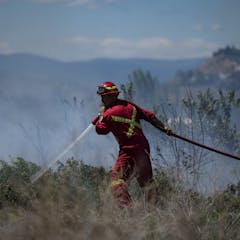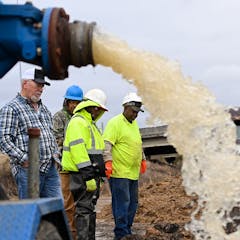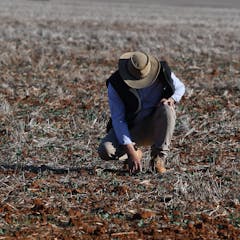
Articles sur Global warming
Affichage de 1 à 20 de 920 articles

Food waste is a serious emergency in Canada and around the world. Here are four practical steps we can take this Earth Day to eat more healthily, reduce food waste and save the planet.

While governments are often blamed for a perceived ‘unjust transition,’ it is actually the industry itself which poses the biggest threat to the future of oil and gas workers.

Sometimes it seems the night is just buzzing with insects. But are there really more insects out at night? We analysed all the evidence on insect activity across the day–night cycle to find out.

In the lead-up to the 2024 federal budget, there was hope for investments in water management and water-related infrastructure. Those hopes were misplaced.

A fossil fuel ideology transcends political lines and inhibits effective action on the green transition. Alberta is a clear example.

Extreme downpours and droughts, both fueled by rising global temperatures, are taking a toll on water infrastructure. Communities trying to manage the threats face three big challenges.

Girls bear the brunt of the climate crisis. It’s time we bring them to the centre of international climate policy.

Kelp forests around the world, and in Canada, are under threat. New research sheds further light on the health, and resilience, of these crucial ecosystems.

With the recent scrapping of Nova Scotia’s Coastal Protection Act, the future of Canada’s iconic Bay of Fundy now rests in the hands of private interests, with potentially significant consequences.

Recent flash droughts in parts of NSW and Victoria appeared quickly and can be followed by intense flooding rains. It’s part of a global trend driven by global warming.

Why the public resistance to carbon tax policies? New research suggests a few key factors that may play a role in influencing popular support for carbon tax efforts in Canada.

School food can connect people powerfully to their local lands, resources and economies, and be a tool towards reconciliation with Indigenous communities.

Natural variability in Australian rainfall can produce “mega-droughts” lasting 20 years or more. Add in human-caused climate change, and future droughts may be far worse than imagined.

Not all activists are in the media spotlight, but they’re crucial to promoting action to slow climate change.

Muslims internationally fast during the day in the holy month. But largely-Islamic nations are feeling the effects of climate change, making life harder both during and outside of Ramadan.

Global warming is making the oceans more acidic. Our work aims to design realistic systems to reduce this acidity, and remove carbon from the atmosphere in the process.

The recent rejection of the start of the Anthropocene epoch reminds us of the paramount importance of preserving what remains of our current Holocene.

We must resist the temptation to go for a weak 2035 target and use the public consultation process to think creatively about how the net-zero transition can be both transformational and fair for all.

Atlantic halibut are making a strong comeback in the Gulf of St. Lawrence. But how do we know where the fish move throughout their lives?

The result shows climate change education in schools must become more holistic and empowering, and children should be allowed to shape the future they will inherit.
